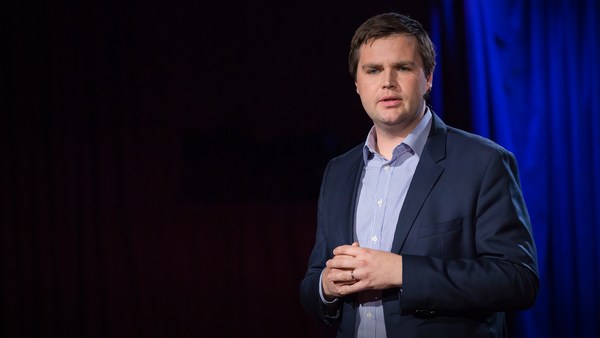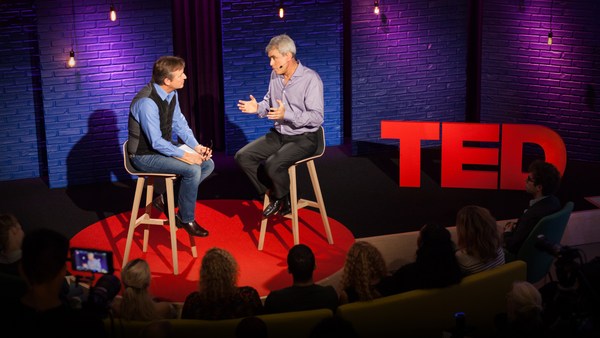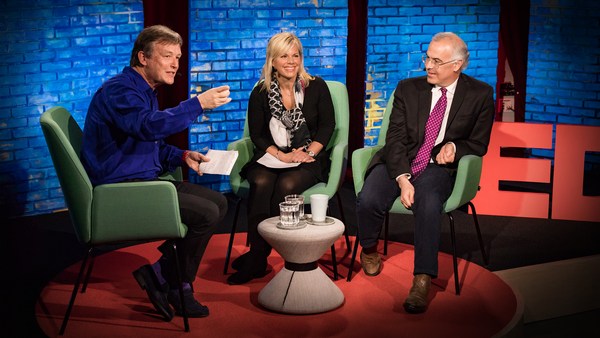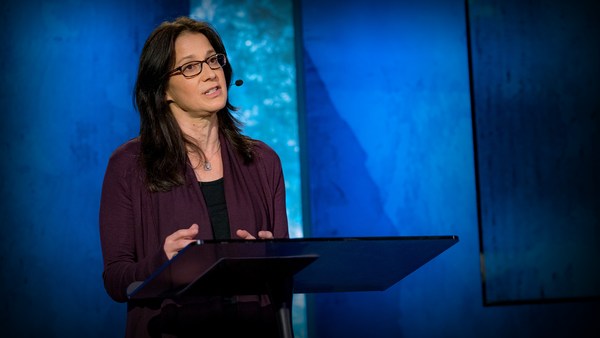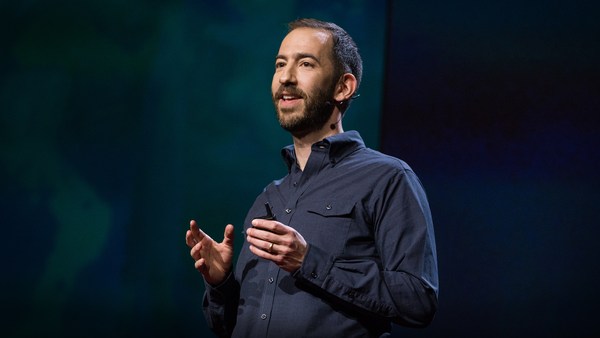If you've been thinking about US politics and trying to make sense of it for the last year or so, you might have hit on something like the following three propositions: one, US partisanship has never been so bad before; two, for the first time, it's geographically spatialized -- we're divided between the coasts, which want to look outwards, and the center of the country, which wants to look inwards; and third, there's nothing we can do about it.
I'm here to today to say that all three of these propositions, all of which sound reasonable, are not true. In fact, our US partisanship goes all the way back to the very beginning of the republic. It was geographically spatialized in almost eerily the same way that it is today, and it often has been throughout US history. And last, and by far most importantly, we actually have an extraordinary mechanism that's designed to help us manage factional disagreement and partisanship. That technology is the Constitution. And this is an evolving, subtly, supplely designed entity that has the specific purpose of teaching us how to manage factional disagreement where it's possible to do that, and giving us techniques for overcoming that disagreement when that's possible.
Now, in order to tell you the story, I want to go back to a pivotal moment in US history, and that is the moment when factional disagreement and partisanship was born. There actually was a birth moment -- a moment in US history when partisanship snapped into place. The person who's at the core of that story is James Madison. And at the moment that this began, James Madison was riding high. He himself was the Einstein of not only the US Constitution, but of constitutional thought more globally, and, to give him his due, he knew it. In a period of time of just three years, from 1785 to 1788, he had conceived, theorized, designed, passed and gotten ratified the US Constitution.
And just to give you some sense of the enormity of what that accomplishment actually was, although Madison couldn't have known it at the time, today that same constitutional technology that he invented is still in use not only in the US, but, 230 years later, in places like Canada, India, South Africa, Brazil. So in an extraordinary range of contexts all over the world, this technology is still the dominant, most used, most effective technology to manage governance.
In that moment, Madison believed that, having solved this problem, the country would run smoothly, and that he had designed a technology that would minimize the results of factions so there would be no political parties. Remarkably, he thought he had designed a constitution that was against political parties and would make them unnecessary.
He had gotten an enormous degree of help in the final marketing phase of his constitutional project from a man you may have heard of, called Alexander Hamilton. Now, Hamilton was everything Madison was not. He was passionate, where Madison was restrained. He was pansexual, where Madison didn't speak to a woman except for once until he was 42 years old, and then married Dolley and lived happily ever after for 40 years.
(Laughter)
To put it bluntly, Hamilton's the kind of person about whom you would write a hip-hop musical --
(Laughter)
and Madison is the kind of person about whom you would not write a hip-hop musical.
(Laughter)
Or indeed, a musical of any kind at all.
But together, they had become a rather unlikely pairing, and they had produced the Federalist Papers, which offered a justification and, as I mentioned, a marketing plan for the Constitution, which had been wildly effective and wildly successful.
Once the new government was in place, Hamilton became Secretary of the Treasury, and he had a very specific idea in mind. And that was to do for financial institutions and infrastructure exactly what Madison had done for constitutions. Again, his contemporaries all knew it. One of them told Madison, who can't have liked it very much, that Hamilton was the Newton of infrastructure. The idea was pretty straightforward. Hamilton would give the United States a national bank, a permanent national debt -- he said it would be "immortal," his phrase -- and a manufacturing policy that would enable trade and manufacturing rather than agriculture, which was where the country's primary wealth had historically been.
Madison went utterly ballistic. And in this pivotal, critical decision, instead of just telling the world that his old friend Hamilton was wrong and was adopting the wrong policies, he actually began to argue that Hamilton's ideas were unconstitutional -- that they violated the very nature of the Constitution that the two of them had drafted together. Hamilton responded the way you would expect. He declared Madison to be his "personal and political enemy" -- these are his words.
So these two founders who had been such close friends and such close allies and such partners, then began to produce enmity. And they did it in the good, old-fashioned way. First, they founded political parties. Madison created a party originally called the Democratic Republican Party -- "Republican" for short -- and Hamilton created a party called the Federalist Party. Those two parties adopted positions on national politics that were extreme and exaggerated. To give you a clear example: Madison, who had always believed that the country would have some manufacturing and some trade and some agriculture, began attacking Hamilton as a kind of tool of the financial markets whom Hamilton himself intended to put in charge of the country. That was an overstatement, but it was something Madison came to believe.
He also attacked city life, and he said that the coasts were corrupt, and what people needed to do was to look inwards to the center of the country, to farmers, who were the essence of Republican virtue, and they should go back to the values that had made American great, specifically the values of the Revolution, and those were the values of low taxes, agriculture and less trade. Hamilton responded to this by saying that Madison was naïve, that he was childish, and that his goal was to turn the United States into a primitive autarchy, self-reliant and completely ineffectual on the global scale.
(Laughter)
They both meant it, and there was some truth to each of their claims, because each side was grossly exaggerating the views of the other in order to fight their war. They founded newspapers, and so for the first time in US history, the news that people received came entirely through the lens of either the Republican or the Federalist party.
How does this end? Well, as it turned out, the Constitution did its work. But it did its work in surprising ways that Madison himself had not fully anticipated. First, there was a series of elections. And the first two times out of the box, the Federalists destroyed the Republicans. Madison was astonished. Of course, he blamed the press.
(Laughter)
And in a rather innovative view -- Madison never failed to innovate when he thought about anything -- he said the reason that the press was so pro-Federalist is that the advertisers were all Federalists, because they were traders on the coasts who got their capital from Britain, which Federalism was in bed with. That was his initial explanation. But despite the fact that the Federalists, once in power, actually enacted laws that criminalized criticism of the government -- that happened in the United States -- nevertheless, the Republicans fought back, and Madison began to emphasize the freedom of speech, which he had built into the Bill of Rights, and the capacity of civil society to organize. And sure enough, nationally, small local groups -- they were called Democratic-Republican Societies -- began to form and protest against Federalist-dominated hegemony. Eventually, the Republicans managed to win a national election -- that was in 1800. Madison became the Secretary of State, his friend and mentor Jefferson became president, and they actually, over time, managed to put the Federalists completely out of business. That was their goal.
Now, why did that happen? It happened because in the structure of the Constitution were several features that actually managed faction the way there were supposed to do in the first place. What were those? One -- most important of all -- the freedom of speech. This was an innovative idea at the time. Namely, that if you were out of power, you could still say that the government was terrible.
Two, civil society organization. The capacity to put together private groups, individuals, political parties and others who would organize to try to bring about fundamental change. Perhaps most significantly was the separation of powers -- an extraordinary component of the Constitution. The thing about the separation of powers is that it did then and it does now, drive governance to the center. You can get elected to office in the United States with help from the periphery, right or left. It turns out, you actually can't govern unless you bring on board the center. There are midterm elections that come incredibly fast after a presidency begins. Those drive presidents towards the center.
There's a structure in which the president, in fact, does not rule or even govern, but can only propose laws which other people have to agree with -- another feature that tends to drive presidents who actually want to get things done to the center. And a glance at the newspapers today will reveal to you that these principles are still completely in operation. No matter how a president gets elected, the president cannot get anything done unless the president first of all follows the rules of the Constitution, because if not, the courts will stand up, as indeed has sometimes occurred, not only recently, but in the past, in US history. And furthermore, the president needs people, elected officials who know they need to win election from centrist voters, also to back his or her policies in order to pass laws. Without it, nothing much happens.
The takeaway of this brief excursus into the history of partisanship, then, is the following: partisanship is real; it's profound; it's extraordinarily powerful, and it's terribly upsetting. But the design of the Constitution is greater than partisanship. It enables us to manage partisanship when that's possible, and it enables us actually to overcome partisan division and produce compromise, when and only when that is possible. A technology like that is a technology that worked for the founders, it worked for their grandchildren, it didn't work at the moment of the Civil War, but then it started working again. And it worked for our grandparents, our parents, and it's going to work for us.
(Applause)
So what you should do is really simple. Stand up for what you believe in, support the organizations that you care about, speak out on the issues that matter to you, get involved, make change, express you opinion, and do it with respect and knowledge and confidence that it's only by working together that the constitutional technology can do the job that it is designed to do.
Stand up for what you believe, but take a deep breath while you do it. It's going to be OK.
Thanks.
(Applause)
